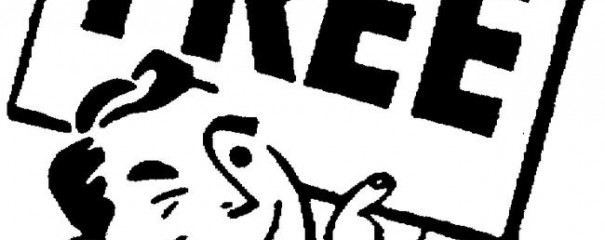“The internet has polarised record stores,” says Rough Trade East’s store director Stephen Godfroy. “At one end of the spectrum you have the complete commoditisation of music, and at the other end the specialists that celebrate music as an artefact. The ones that fall inbetween fail – which is the reason HMV failed.”

(Image Credit: Trischung)
Rough Trade is opening a new store next week in Williamsburg, NYC’s former hipster haven. Clearly they missed the memo e-mail that record stores are dead and gone, savaged by the P2P wolf and slowly having their bones picked clean by the circling vultures of streaming music.
What the experts forget is that niches contain super fans. And super fans tend to spend a lot of money.
The Last Bastion of Bricks and Mortar Record Stores
Unlike the aforementioned HMV chain, which has died a slow, sterile death, Rough Trade has been anything but flat lining. Business is booming.
Though I can’t be certain, any time I visit Other Music in semi-swanky NoHo, where the rents must now be high enough to bankroll small African nations, it seems to be turning a decent trade as well.
Despite the major wave of closures, small pockets of resistance seem to be winning their individual battles, despite the war for music retail outlets long being lost.
What keeps them not just alive, but breathing rather healthily? Paradoxically, it seems to be the move to digital and the abundant music that it has wrought.
The Burden of Choice and Our Need for Curators
Even during the height of file-sharing disruption – digital music for free, pre-iTunes, teenagers being sued for millions of dollars for their illicit downloads – fans sought out curators. Magazines, blogs, blog aggregators, Pitchfork, Hype Machine… as the library of online music expanded, with everything available to us by a simple search, most music fans still looked to others for guidance.
When we’re overwhelmed by choice, we look to curators for assistance.

(Image Credit: bumeister)
It makes complete sense. It’s actually why brands do what they do and spend billions every year just to prop up their name recognition. Why do so many people come to New York City, with its frankly exquisite independent coffee shops, and head straight to Starbucks?
We go to what we know and, by extension, what we trust. We want the same from music recommendations, be it a friend with similar taste or a site whose reviews we trust.
Bob Lefsetz tends towards the idea that we’ve only got time for great, the most outstanding artists. That’s not true. We also have time for what others tell us is great, even if it doesn’t click right away. That trust carries us through for some time, only eroding after several mistargeted recommendations. If you have one mediocre mocha, you’ll still go back to the ‘bucks. The effort to build a new familiar is much more work than giving them a second, third, perhaps fourth chance.
Which brings us back to Rough Trade… music fans love ‘em.
Better Branding Through Independence
Indie record labels are compelling brands. Sub Pop, Matador, Discord, etc. Any music geek will be able to reel off a number of their favorite indie labels, each of which will have guided them to new music on the basis of successful recommendations in the past. Great brands become a repository for emotions and ideas. Great labels do the same, becoming standard bearers for a style of music or a scene that develops. And niches of fans flock to them for that reason.
Rough Trade built its name on being extremely picky about the records it stocked in its early life as a music retailer, lending it a level of credibility that has now endured over three decades. Even through years of financial turmoil and bankruptcy, the label and retail locations have been able to bounce back thanks to its brand.
That name recognition has helped it make the jump across the Atlantic for next week’s big opening. Fans will flock to the new store to see what it has to offer, browse the recommendations, and perhaps find their new favorite act (or rekindle a love affair with an old one). Over the long term, Rough Trade has built a reputation, a name, and will now continue to develop the foundation it has built. In itself, this is something that a lot of musicians can learn from.
Make More Money by Providing an Experience
I’ll write much more on this in the weeks ahead, but the final point to make is that the remaining music stores understand their role as a hub for music discussion and live performances. Digital channels can give us all the music, almost literally, but rarely provide any of the personality.
Though we admittedly need them less now, music stores are still important as a place to gather when we want to be enveloped by the experience. Not all fans need this, but enough do down in the niches to justify supporting those that make an effort to give us that experience. There are disposable entertainment dollars in every music fan’s pocket, you just need to give them a space and a reason to spend them on music, as opposed to games, movies or any other competing experience.
Focusing more time and effort on fan experience is going to be a crucial element of the new music industry. How are you going to give your listeners a memory that is intrinsically linked to your songs? That’s something that will stay with them, and lead them to spend money with you again and again.


